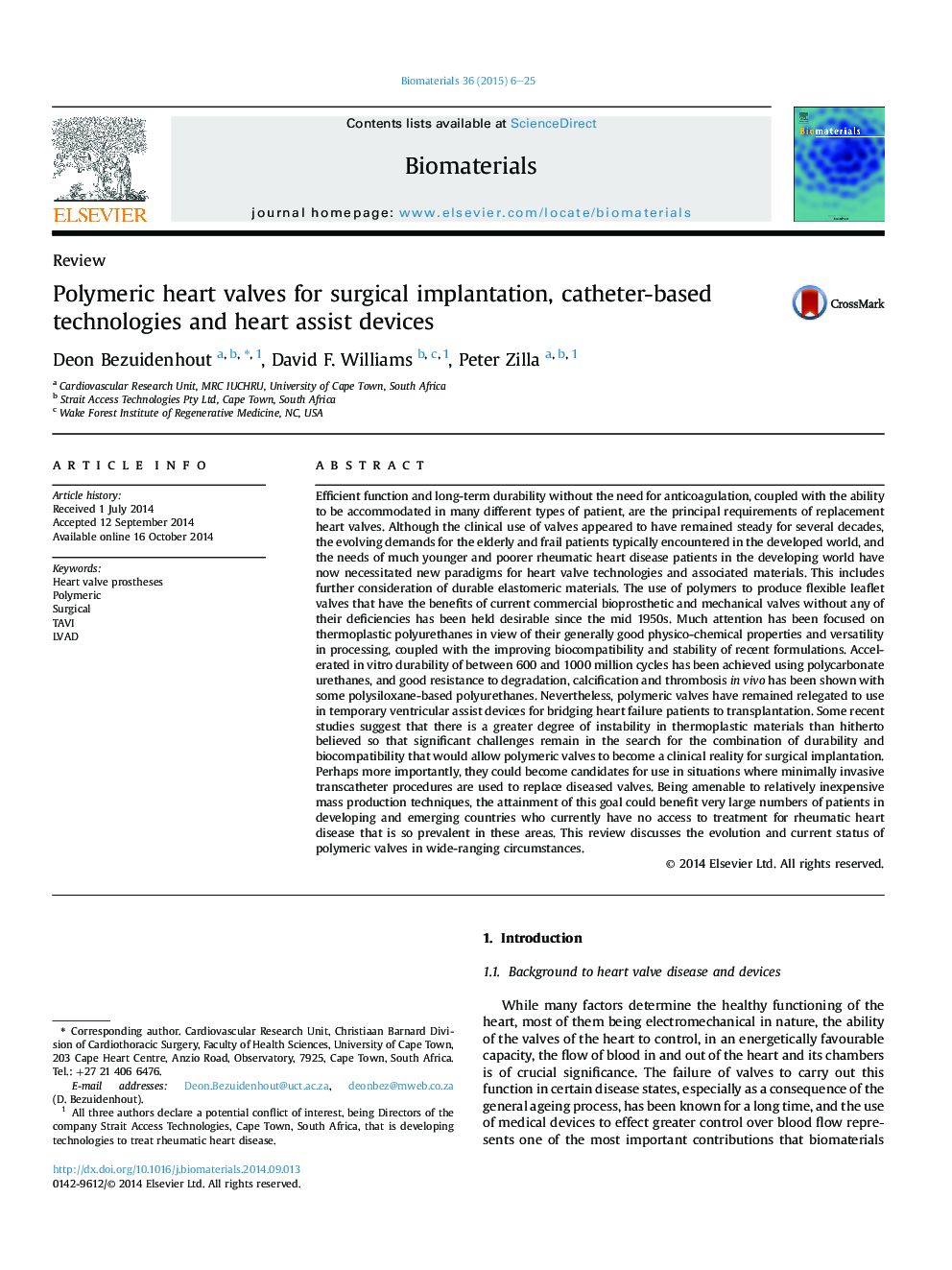| کد مقاله | کد نشریه | سال انتشار | مقاله انگلیسی | نسخه تمام متن |
|---|---|---|---|---|
| 6486501 | 440 | 2015 | 20 صفحه PDF | دانلود رایگان |
عنوان انگلیسی مقاله ISI
Polymeric heart valves for surgical implantation, catheter-based technologies and heart assist devices
ترجمه فارسی عنوان
دریچه های قلب پلیمری برای کاشت جراحی، تکنولوژی مبتنی بر کاتتر و دستگاه های کمک قلبی
دانلود مقاله + سفارش ترجمه
دانلود مقاله ISI انگلیسی
رایگان برای ایرانیان
موضوعات مرتبط
مهندسی و علوم پایه
مهندسی شیمی
بیو مهندسی (مهندسی زیستی)
چکیده انگلیسی
Efficient function and long-term durability without the need for anticoagulation, coupled with the ability to be accommodated in many different types of patient, are the principal requirements of replacement heart valves. Although the clinical use of valves appeared to have remained steady for several decades, the evolving demands for the elderly and frail patients typically encountered in the developed world, and the needs of much younger and poorer rheumatic heart disease patients in the developing world have now necessitated new paradigms for heart valve technologies and associated materials. This includes further consideration of durable elastomeric materials. The use of polymers to produce flexible leaflet valves that have the benefits of current commercial bioprosthetic and mechanical valves without any of their deficiencies has been held desirable since the mid 1950s. Much attention has been focused on thermoplastic polyurethanes in view of their generally good physico-chemical properties and versatility in processing, coupled with the improving biocompatibility and stability of recent formulations. Accelerated in vitro durability of between 600 and 1000 million cycles has been achieved using polycarbonate urethanes, and good resistance to degradation, calcification and thrombosis in vivo has been shown with some polysiloxane-based polyurethanes. Nevertheless, polymeric valves have remained relegated to use in temporary ventricular assist devices for bridging heart failure patients to transplantation. Some recent studies suggest that there is a greater degree of instability in thermoplastic materials than hitherto believed so that significant challenges remain in the search for the combination of durability and biocompatibility that would allow polymeric valves to become a clinical reality for surgical implantation. Perhaps more importantly, they could become candidates for use in situations where minimally invasive transcatheter procedures are used to replace diseased valves. Being amenable to relatively inexpensive mass production techniques, the attainment of this goal could benefit very large numbers of patients in developing and emerging countries who currently have no access to treatment for rheumatic heart disease that is so prevalent in these areas. This review discusses the evolution and current status of polymeric valves in wide-ranging circumstances.
ناشر
Database: Elsevier - ScienceDirect (ساینس دایرکت)
Journal: Biomaterials - Volume 36, January 2015, Pages 6-25
Journal: Biomaterials - Volume 36, January 2015, Pages 6-25
نویسندگان
Deon Bezuidenhout, David F. Williams, Peter Zilla,
